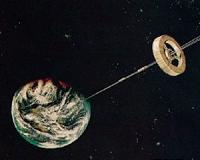 |
El Segundo CA (SPX) Jul 30, 2010 A remote Canadian island is being used to simulate isolated space flight conditions for a NASA-funded medical research study that could produce important information to assist astronauts in potential long duration flights to Mars or an asteroid. The Haughton-Mars Project Research Station on Devon Island, well above the Arctic Circle, has many features of isolation and terrain that make it an ideal environment to simulate some conditions of space exploration. Disturbances in human circadian rhythm, which are linked to the light-dark cycle, are also expected due to the continuous daylight experienced on Devon during the summer months. "The six-week study seeks to understand the relationship between the stress of human isolation and the immune system," said Dr. Valerie Meyers, a scientist at Wyle's unit that supports NASA's manned space program at Johnson Space Center in Houston. She is serving as principal investigator for the NASA study as well as one of the subjects. "This research may provide insight into the mechanisms of immune dysfunction associated with chronic stress. We hope to find ways to minimize the negative effects of stress on astronauts as well as people involved in high stress occupations here on Earth." Spaceflight leads to changes in the body's immune system. These changes in immunity may decrease crew members' ability to combat infections and increase their susceptibility to radiation and their risk of developing cancer during long-duration flights. Therefore, immune changes may represent a major medical concern if humans are to travel to Mars or to an asteroid as currently proposed. Since 2008, Dr. Meyers has served as a scientist with Wyle supporting NASA's toxicology office at the Johnson Space Center. Her main responsibilities for Wyle are to perform toxicity hazard assessments of spacecraft payload and system chemicals and to develop interim spacecraft maximum allowable concentrations to protect astronauts from toxic exposures. Dr. Meyers will collect blood and saliva samples from four to six study subjects during the six-week deployment to Devon Island, which will run from early July through mid August. This pilot project will help to determine the validity of this spaceflight analog for future immunity and countermeasure studies. Cell surface markers will be analyzed in the field using the Accuri C6 portable flow cytometer, loaned by Accuri Cytometers, Inc. Plasma cortisol levels and levels of L-selectin shed into the blood will be analyzed in the field using the Epoch spectrophotometer, loaned by BioTek. Saliva samples will be frozen and returned to Johnson Space Center where they will be analyzed by Satish Mehta of EASI-Microbiology for evidence of viral shedding, which is a marker of stress seen during spaceflight. The Devon Island research site is managed by the Haughton-Mars Project, an international interdisciplinary field research project centered on the scientific study of the Haughton impact structure and surrounding terrain. Science and exploration is conducted at the site by NASA, the Canadian Space Agency, the Mars Institute, the SETI Institute and other partnering organizations.
Share This Article With Planet Earth
Related Links Wyle Haughton-Mars Project Research Station Space Tourism, Space Transport and Space Exploration News
 2010 Space Elevator Conference
2010 Space Elevator ConferenceMountain View CA (SPX) Jul 27, 2010 The International Space Elevator Consortium (ISEC), an independent coalition designed to promote outreach and foster research relating to the construction of an Elevator to Space, has announced that Russian engineer Yuri Artsutanov and American engineer Jerome Pearson, pioneers of the modern Space Elevator concept, will appear at the 2010 Space Elevator Conference. The Conference, which wi ... read more |
|
| The content herein, unless otherwise known to be public domain, are Copyright 1995-2010 - SpaceDaily. AFP and UPI Wire Stories are copyright Agence France-Presse and United Press International. ESA Portal Reports are copyright European Space Agency. All NASA sourced material is public domain. Additional copyrights may apply in whole or part to other bona fide parties. Advertising does not imply endorsement,agreement or approval of any opinions, statements or information provided by SpaceDaily on any Web page published or hosted by SpaceDaily. Privacy Statement |